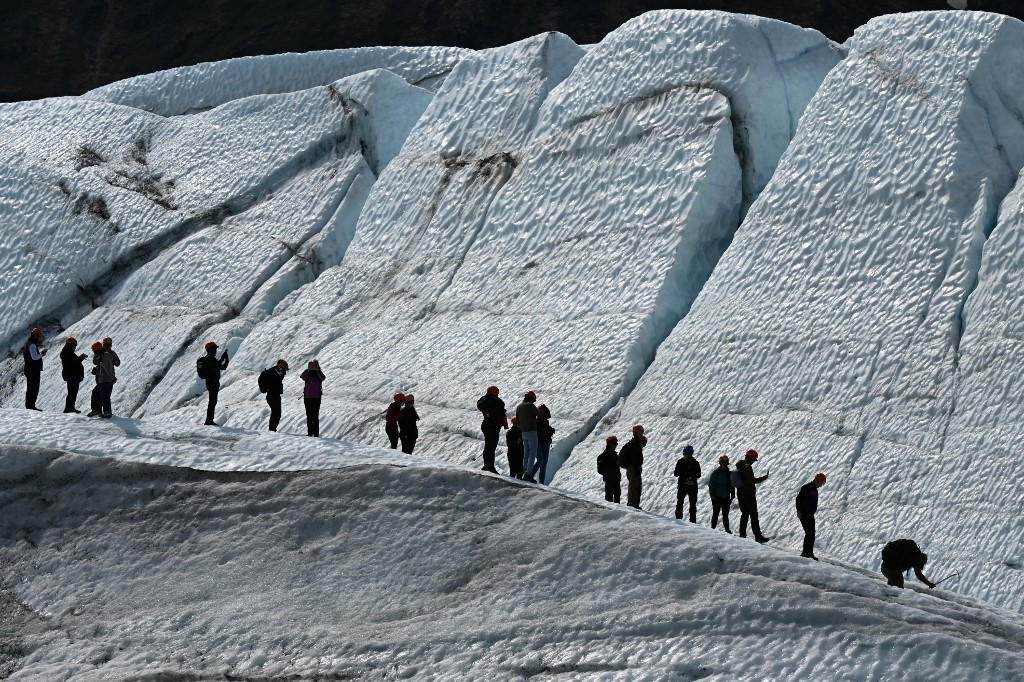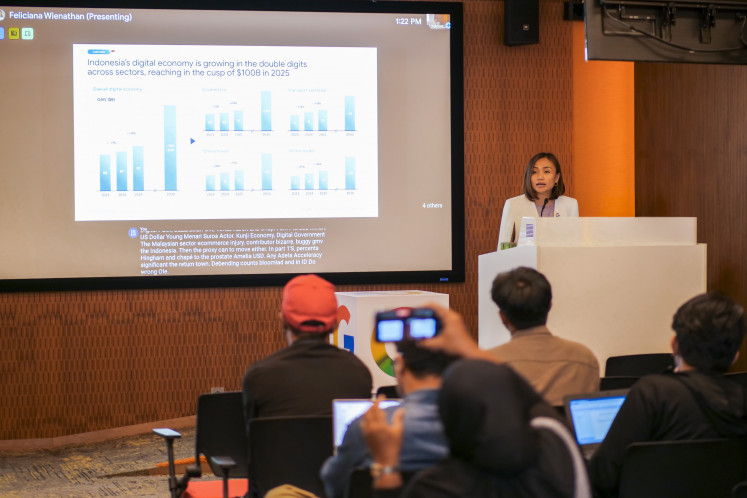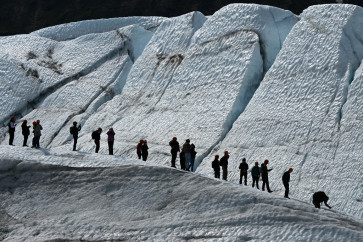Popular Reads
Top Results
Can't find what you're looking for?
View all search resultsPopular Reads
Top Results
Can't find what you're looking for?
View all search resultsNew study finds prehistoric migration from China to Americas
A new genetics study published Tuesday in Cell Reports finds that some of the first arrivals came from China during two distinct migrations: the first during the last ice age, and the second shortly after.
Change text size
Gift Premium Articles
to Anyone
 Visitors hike on the ice during a guided tour on the Matanuska Glacier, a 27-mile (43.5kms) long valley glacier feeding water into the Matanuska River, on July 10, 2022, about 100 miles (161kms) northeast of Anchorage near Palmer, Alaska. The glacier appears to be retreating each year as the access trail for tourists and guides must be constantly maintained through glacial silt and mud, over the rocky moraine and onto the ice featuring clean white and deep blue colors. While Alaska is home to about 25,000 glaciers, studies suggest that rising global temperatures linked to climate change are causing glaciers globally to melt. The Matanuska Glacier is the largest glacier accessible by car in the US via a private road and paying an access fee for a guided glacier tour that is a large part of an economy of tourism in the region.
(AFP/Patrick T. Fallon)
Visitors hike on the ice during a guided tour on the Matanuska Glacier, a 27-mile (43.5kms) long valley glacier feeding water into the Matanuska River, on July 10, 2022, about 100 miles (161kms) northeast of Anchorage near Palmer, Alaska. The glacier appears to be retreating each year as the access trail for tourists and guides must be constantly maintained through glacial silt and mud, over the rocky moraine and onto the ice featuring clean white and deep blue colors. While Alaska is home to about 25,000 glaciers, studies suggest that rising global temperatures linked to climate change are causing glaciers globally to melt. The Matanuska Glacier is the largest glacier accessible by car in the US via a private road and paying an access fee for a guided glacier tour that is a large part of an economy of tourism in the region.
(AFP/Patrick T. Fallon)
A
s the last continents to be settled by humans, the question of how and when people first came to the Americas has long intrigued scientists.
A new genetics study published Tuesday in Cell Reports finds that some of the first arrivals came from China during two distinct migrations: the first during the last ice age, and the second shortly after.
"Our findings indicate that besides the previously indicated ancestral sources of Native Americans in Siberia, the northern coastal China also served as a genetic reservoir contributing to the gene pool," Yu-Chun Li, one of the report authors, told AFP.
Li added that during the second migration, the same lineage of people settled in Japan, which could help explain similarities in prehistoric arrowheads and spears found in the Americas, China and Japan.
It was once believed that ancient Siberians, who crossed over a land bridge that existed in the Bering Strait linking modern Russia and Alaska, were the sole ancestors of Native Americans.
More recent research, from the late 2000s onwards, has signaled more diverse sources from Asia could be connected to an ancient lineage responsible for founding populations across the Americas, including Bolivia, Brazil, Chile, Ecuador, Mexico and California.
Known as D4h, this lineage is found in mitochondrial DNA, which is inherited only from mothers and is used to trace maternal ancestry.


















